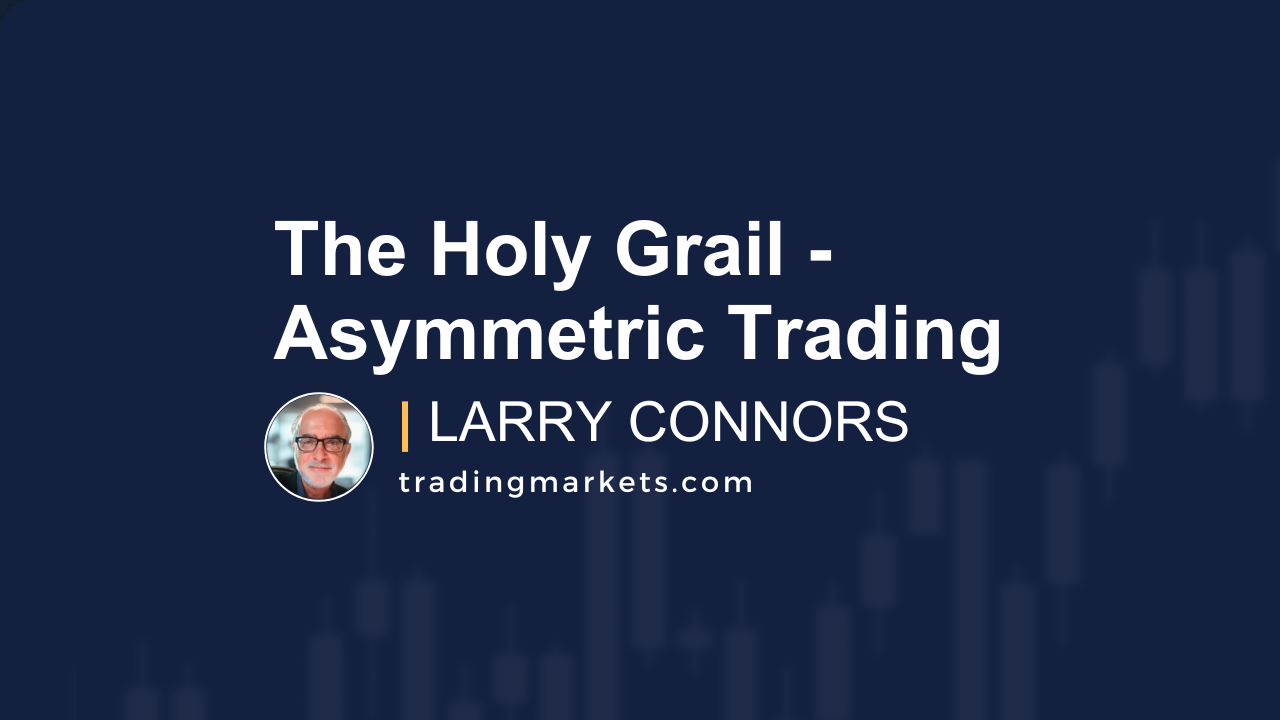The Holy Grail – Asymmetric Trading
- September 13, 2024
- Larry Connors

Larry Connors' Trading Lesson of The Day | September 13, 2024
Do you want to know the secret to becoming extremely successful in trading?
We all do. And there are many.
But in order to create the greatest amount of wealth for yourself, the holy grail of trading comes down to only a few key things.
And one of them is constructing your trades for asymmetric returns.
What Is Asymmetric Trading?
Day One
1. Mohnish Pabrai (Unknown Market Wizards): “Heads, I win; tails, I don’t lose much. That’s the kind of bets I like to make. The downside is limited, but the upside is virtually unlimited.”
⏵ Additional Note – Mohnish is a self-made billionaire money manager. His book The Dhandho Investor forever changed my life in understanding asymmetric trading and wealth creation.
Over my 43-year career, I’ve read hundreds and it likely borders near 1000 books on trading and investing (my philosophy is you can always learn something new from everyone). The Dhandho Investor has had the greatest impact on my thinking when it comes to trading and investing.
2. Colm O’Shea (Hedge Fund Market Wizards): “I’m always looking for asymmetrical trades—where the upside is far greater than the downside, and the probability is in my favor.”
3. Richard Dennis (Market Wizards): “You could publish the rules in a newspaper and no one would follow them. The key is consistency and discipline, but also identifying trades where the potential payoff is huge relative to the risk.”
⏵ Additional Note – If you’re new to trading learn about “The Turtles” (look them up or better yet, use AI (ChatGPT 4.o) to go deeper. Richard is the “father” of The Turtles.
4. Monroe Trout (The New Market Wizards): “The key is to structure trades so that the potential reward is at least three to five times the risk. That way, you only need to be right a small percentage of the time to come out ahead.”
⏵ Additional Note – I’ve never met Monroe but one of his former traders interviewed for a position with me a number of years ago. He was bound by an NDA which he abided by. The few pieces he was allowed to share were, at the time, eye-opening to me. The level of detail in identifying asymmetric trades was beyond anything I had ever heard of at that time.
5. Stanley Druckenmiller (The New Market Wizards): “The way to build long-term returns is through preservation of capital and home runs.”
⏵ Additional Note – Read my series on not using stops. Druckenmiller is the star.
Simple formula!
20. Jim Rogers (The New Market Wizards): “If you can figure out when the odds are on your side in a huge way, you don’t need a lot of trades. A few asymmetric trades can make your entire career.”
⏵ Additional Note – This says it all.
Wrap Up
Different traders, different markets, and all have very different personalities.
The one thing they all have in common is that they are Asymmetric Traders.
I hope you become one too.
We’ll begin looking at how to build asymmetrical trading strategies on Monday.
Enjoy your weekend!
Larry Connors
